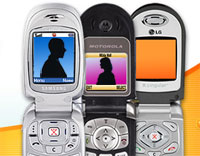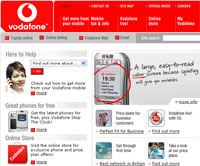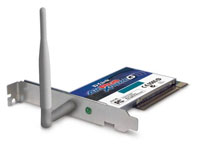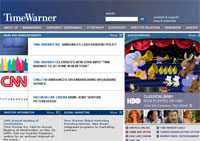 The rumours have been floating around the Internet for weeks, but it now seems certain that Apple will announce later today that it will be switching its computers to Intel’s.
The rumours have been floating around the Internet for weeks, but it now seems certain that Apple will announce later today that it will be switching its computers to Intel’s.
The move, certain to get some Mac diehards crying into their single button mouses, means the end of Apple’s partnership with IBM, whose PowerPC processors have powered Macs since 1994.
Insiders report that there will be a phased transition to Intel’s chips, with Apple planning to move lower-end computers like the Mac Mini to Intel chips in mid-2006 with beefier models like the Power Mac moving over in mid-2007.
The story first surfaced last month in the Wall Street Journal, but many analysts laughed it off saying that the move would be both difficult and risky.
But the rumours persisted, fuelled by comments by Anand Chandrasekher, VP and GM of Intel’s Mobile Platforms Group at the Computex trade show in Taipei last week.
 When asked about the deal he said that the company has long pursued a deal with Apple, adding, “We always talk to Apple. Apple is a design win that we’ve coveted for 20 years and we continue to covet them as a design win. We will never give up on Apple.”
When asked about the deal he said that the company has long pursued a deal with Apple, adding, “We always talk to Apple. Apple is a design win that we’ve coveted for 20 years and we continue to covet them as a design win. We will never give up on Apple.”
This isn’t the first time that Apple have shifted processors, with the company successfully changing over from Motorola’s 680×0 line of processors to the Power line (jointly made by IBM and Motorola) in the 1990s.
The switch seems to be have been prompted by several factors. IBM had previously been publicly slapped down by Apple for their chip delivery problems, and Apple’s plans for a wide variety of PowerPC processors wasn’t going down well with the Big Blue, who harboured doubts about the profitability of a low-volume business.
Although the loss of the Mac businesses is something of a slap in the face with a wet fish to IBM, shareholders can be consoled by the fact that the Power family processors will be used in future gaming consoles from Microsoft, Sony and Nintendo.
Intel remains the Big Cheese of the PC processor business, hogging an 81.7 percent market share in the first quarter of 2005, compared with 16.9 percent for Advanced Micro Devices, according to recent research.
PowerPC processors aren’t included in these numbers, but Apple only have around 1.8 percent of the worldwide PC market.
Steve Jobs will be making his announcement at Apple’s Worldwide Developer Conference later today.
 The European Commission has announced plans to create a single set of European Union rules on broadcasting and the wireless spectrum.
The European Commission has announced plans to create a single set of European Union rules on broadcasting and the wireless spectrum. Europe is also looking to free up the highly lucrative wireless spectrum – currently worth something like €9 billion (~US$11bn ~£6bn) a year – and hopes that digital frequencies used by services such as mobile phone operators, police radar and radio will be brought under centralised EU control by the end of 2005.
Europe is also looking to free up the highly lucrative wireless spectrum – currently worth something like €9 billion (~US$11bn ~£6bn) a year – and hopes that digital frequencies used by services such as mobile phone operators, police radar and radio will be brought under centralised EU control by the end of 2005. Saucy sensation seekers and sleazy surfers will be rewarded with their very own porn-friendly set of .xxx domains before the end of the year.
Saucy sensation seekers and sleazy surfers will be rewarded with their very own porn-friendly set of .xxx domains before the end of the year. It is hoped that pornsters will voluntarily shift from their current .com addresses, thus making it easier for parents to filter out adult material, but in an industry not exactly renowned for its high moral stance, we anticipate that not all will be wiling to switch from their lucrative, high profile domains.
It is hoped that pornsters will voluntarily shift from their current .com addresses, thus making it easier for parents to filter out adult material, but in an industry not exactly renowned for its high moral stance, we anticipate that not all will be wiling to switch from their lucrative, high profile domains. Unlike the milk-snatcher Margaret Thatcher, the ICANN’s decision proves that they are definitely for turning – in November 2000, the ICANN staff rejected ICM Registry’s first application after objecting to domains such as .kids and .xxx.
Unlike the milk-snatcher Margaret Thatcher, the ICANN’s decision proves that they are definitely for turning – in November 2000, the ICANN staff rejected ICM Registry’s first application after objecting to domains such as .kids and .xxx. A survey by Cingular Wireless has revealed that men spend more time yakking on mobiles than women.
A survey by Cingular Wireless has revealed that men spend more time yakking on mobiles than women. Women aren’t afraid to get snapping either, with 60 percent using their camera feature frequently or occasionally against 40 percent of men using it as often.
Women aren’t afraid to get snapping either, with 60 percent using their camera feature frequently or occasionally against 40 percent of men using it as often. It’s OK to say you don’t understand the ringtones business.
It’s OK to say you don’t understand the ringtones business. This lead to three possible reactions – the haters, the lovers and the not-bovered.
This lead to three possible reactions – the haters, the lovers and the not-bovered.
 The draw of ringtones is to individualise the phone handset. But with ringtones, there is no scarcity of supply. Everyone can have one, if they pay for it.
The draw of ringtones is to individualise the phone handset. But with ringtones, there is no scarcity of supply. Everyone can have one, if they pay for it. Following Ofcom publishing its
Following Ofcom publishing its  2. The decision also has a social impact: There was straight, uncritical reporting of the ban in the trade press. Privately, some people have told me that they thought the Ofcom research was shoddy. In fact, one former content regulator told me he was ‘angry’ with the decision. But, there seems to be a general intellectual consensus that there is a difference between ‘freedom of expression’, championed by British academia and the likes of the Guardian, and ‘porn-campaigning’ which is some lower form of freedom.
2. The decision also has a social impact: There was straight, uncritical reporting of the ban in the trade press. Privately, some people have told me that they thought the Ofcom research was shoddy. In fact, one former content regulator told me he was ‘angry’ with the decision. But, there seems to be a general intellectual consensus that there is a difference between ‘freedom of expression’, championed by British academia and the likes of the Guardian, and ‘porn-campaigning’ which is some lower form of freedom. Vodafone execs spent the morning cackling wildly to themselves, throwing wads of dollar bills in the air and rolling around silk-covered beds covered in cash as record revenues and profits for its full year results were announced to the world.
Vodafone execs spent the morning cackling wildly to themselves, throwing wads of dollar bills in the air and rolling around silk-covered beds covered in cash as record revenues and profits for its full year results were announced to the world. But in-between triumphant licks of triple-thick Cornish clotted cream, Sarin sounded a cautious note, warning that competition was rising.
But in-between triumphant licks of triple-thick Cornish clotted cream, Sarin sounded a cautious note, warning that competition was rising. Vodafone performed particularly well in strong markets such as the US and Spain, with revenues growing at more than 20% year on year.
Vodafone performed particularly well in strong markets such as the US and Spain, with revenues growing at more than 20% year on year. Despite prices being pushed downwards by fierce price competition, worldwide wireless LAN equipment revenue rose 20% to US$767.6 million (~£420m ~€610m) between the fourth quarter of 2004 and the first quarter of 2005.
Despite prices being pushed downwards by fierce price competition, worldwide wireless LAN equipment revenue rose 20% to US$767.6 million (~£420m ~€610m) between the fourth quarter of 2004 and the first quarter of 2005. That’s a thumping great 37% increase in unit shipments, representing not-to-be-scoffed-at sales of 6 million.
That’s a thumping great 37% increase in unit shipments, representing not-to-be-scoffed-at sales of 6 million. D-Link barged ahead of Cisco-Linksys to grab second place, with NETGEAR in fourth position.
D-Link barged ahead of Cisco-Linksys to grab second place, with NETGEAR in fourth position. Back in the old days when Glastonbury was a field of medieval mud occupied by confused hippies and LSD travellers, the customary way to show your appreciation of the band was to flash the occasional peace sign or waft a spliff skywards.
Back in the old days when Glastonbury was a field of medieval mud occupied by confused hippies and LSD travellers, the customary way to show your appreciation of the band was to flash the occasional peace sign or waft a spliff skywards. For today’s hi-tech toy generation, new ways of bigging up a band have developed.
For today’s hi-tech toy generation, new ways of bigging up a band have developed. We’re not sure what the remaining 90% of the crowd thought of this pointless onscreen nonsense, but we’d be reaching for our phone zappers in double quick time.
We’re not sure what the remaining 90% of the crowd thought of this pointless onscreen nonsense, but we’d be reaching for our phone zappers in double quick time. Time Warner is considering “spinning off” its AOL division to help finance acquisitions in the future, said chief executive Richard D. Parsons on Friday.
Time Warner is considering “spinning off” its AOL division to help finance acquisitions in the future, said chief executive Richard D. Parsons on Friday. With Time Warner’s pockets already considerably lightened, transatlantic regulators then accused them of overstating advertising and subscriber numbers from mid-2000, with the company settling all charges with thumping great payments of US$510 million (~£279m ~€406.6m) in the States and US$300m (~£164~€239m) in the EU.
With Time Warner’s pockets already considerably lightened, transatlantic regulators then accused them of overstating advertising and subscriber numbers from mid-2000, with the company settling all charges with thumping great payments of US$510 million (~£279m ~€406.6m) in the States and US$300m (~£164~€239m) in the EU. AOL is now trying to find new revenue sources to compensate for the loss of U.S. subscribers to its dial-up Web access service, which has declined by 5 million users in three years, to 21.7 million.
AOL is now trying to find new revenue sources to compensate for the loss of U.S. subscribers to its dial-up Web access service, which has declined by 5 million users in three years, to 21.7 million.